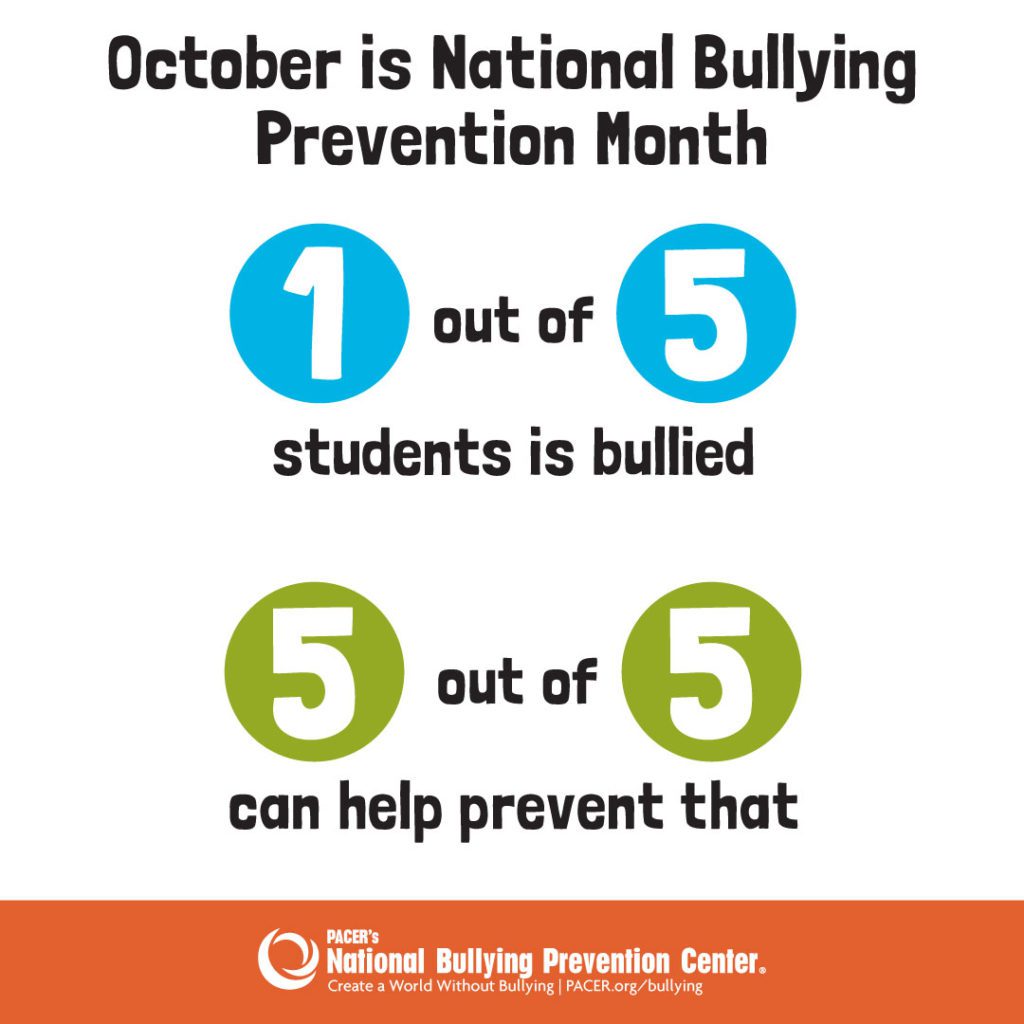5 Bullying Prevention Strategies for Schools
October is Bullying Prevention Month, serving as a reminder that we all play an important role supporting students who may be experiencing bullying.
One out of every five students report being bullied, and most of it is happening within the school walls. Students who experience bullying report that it most commonly occurs in the hallway/stairwell at school (43%), in the classroom (42%), or in the cafeteria (22%), according to a national survey conducted by the National Center for Education Statistics.
Bullying can negatively affect a student’s ability to learn. Students who are bullied may experience physical injury, social and emotional distress, depression, anxiety, sleep difficulties and more. This represents a significant challenge in schools, and it’s been demonstrated that prevention is the best strategy.
Here are five bullying prevention strategies districts and schools can implement to address the widespread issue.
1. Know how to recognize signs of bullying
Students often stay silent about being bullied. Instead of waiting for students to come forward for help, it’s important to spot warning signs and engage in meaningful dialogue to give students the support they need.
Signs that a student is being bullied, as outlined by the U.S. Department of Health and Human Services, include:
- Unexplainable injuries
- Lost or destroyed clothing, books, electronics, or jewelry
- Frequent headaches or stomach aches, feeling sick or faking illness
- Changes in eating habits, like suddenly skipping meals or binge eating
- Difficulty sleeping or frequent nightmares
- Declining grades, loss of interest in schoolwork, or not wanting to go to school
- Sudden loss of friends or avoidance of social situations
- Feelings of helplessness or decreased self esteem
- Self-destructive behaviors such as running away from home, harming themselves, or talking about suicide
Educators are on the front lines and are uniquely positioned to detect warning signs, often even before parents or caregivers. If you notice any of these red flags, it’s important to talk to the student as soon as possible.
2. Evidence based bullying prevention training for teachers and staff
Here at Kognito, we know that conversations have the power to change lives. We also know that in difficult situations, the way you engage with students matters. Our evidence-based online learning experiences give educators the knowledge, skills, and practice they need to gain confidence in addressing at-risk students.

The Bullying Prevention for Educators & Staff interactive simulation was developed by leading experts to:
- Increase knowledge and awareness of bullying and how to prevent it
- Build skills in leading conversations with students who have been targeted
- Reinforce classroom expectations around biased language and bullying behavior
- Connect students to support
- Understand your school’s specific support services and availability
In an actual classroom, educators only have one opportunity to address an incident. But in the Bullying Prevention for Educators & Staff simulation, users can keep on trying until they feel prepared to carry their knowledge and skills into real life. This practice-based learning can help empower educators to address bullying confidently and effectively.
3. Upstander bullying prevention training for students
Students also play a role in creating a positive school climate. They are more likely to see and know what is really going on, and we know that peers can be powerful upstanders — people who observe a behavior that could lead to harm, and respond with action to make things better.
Giving students bullying prevention training can equip them with knowledge and skills so they know where to report and how they can intervene when bullying occurs. It can transform them from bystanders to upstanders, and empower them to make a difference in their school safety and climate.

Our Friend2Friend: Bullying Prevention simulation is currently being developed to give students the ability to engage in practice scenarios involving bullying so they can develop effective techniques to manage these situations among other students and peers. We’ll share more details soon!
4. Enforce school bullying policies
Establishing and enforcing school policies related to bullying can send the message that bullying behavior won’t be tolerated. Policies should be clear so that students understand what is expected of them.
Most schools have rules and procedures in place to deal with student bullying. In fact, many states now require it. But the existence of documentation isn’t enough — it needs to be understood by the entire school community, and revisited regularly to ensure it addresses present-day needs.
Our Bullying Prevention for Educators & Staff simulation is customized to include specific school policies to teach or refresh educators about the resources available to them.
5. Engage the greater school community (parents and caregivers)

Educators and students have insight into what’s happening at school, but parents and caregivers can see what’s happening at home. As members of the greater school community, they have a role to play in bullying prevention, too.
More than half of parents/caregivers are concerned about their child being bullied. They want to connect with their child, but may not know the best strategies. Schools can help by providing training opportunities that give parents evidence-based techniques that can empower them to start meaningful conversations with their child.
Safe and Caring Schools for Parents & Caregivers is an online simulation designed to foster a supportive school community through open communication between students and adults. This learning experience focuses on identifying bullying and cyberbullying and provides valuable tips and strategies for parents and caregivers on response strategies.
Download the eBook: Fostering Safe and Supportive School Communities
Each of the simulations mentioned are part of our Violence Prevention Suite, which takes an upstream approach to empower the entire school community to discuss and address violence and bullying.
Download your complimentary copy of the violence prevention eBook to explore how virtual humans and evidence-based strategies can help upskill educators, staff, students, and caregivers to create a positive and nurturing environment.